i have breadboarded a TDA2050 amplifier, using this schematic
i get good sound intensity with a half acceptable quality. the down side is the constant noise and humming. i have found a possible solution for the problem to be the input, as when i connect the GND to input the noise is fully removed. the situation improved a little when i added a 10k parallel resitor in the input, but i was wondering if it was possible to use another circuit in the input stage that outputs exact GND or 0v DC when there is no signal and the signal itself when i have a signal. i have tried a ua741 differential amplifier, voltage follower circuit, and a mosfet based buffer . they all enhance the quality but the hum is still non-negligible,
thanks in advance

